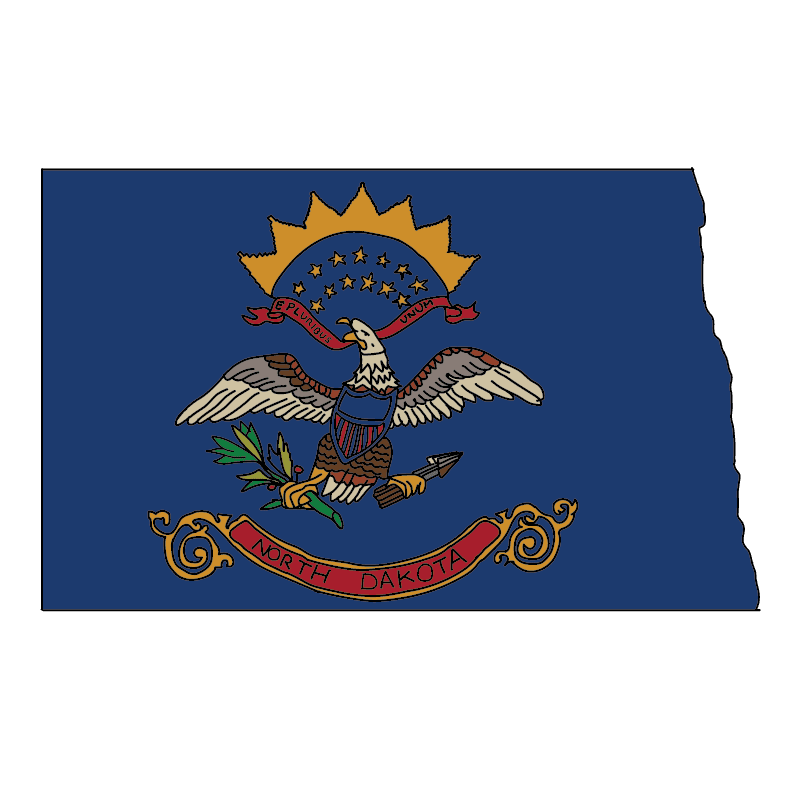The rose has been a symbol of love and beauty for centuries, and North Dakota has its unique history and culture surrounding this beautiful flower. The state flower of North Dakota is the wild prairie rose, which was officially adopted in 1907. The wild prairie rose is a hardy and beautiful flower that grows naturally throughout North America. Its bright pink petals and yellow stamens make it a beloved symbol of the state’s natural beauty and heritage.
In addition to the wild prairie rose, North Dakota is also home to many other varieties of roses. These roses are grown in gardens and parks throughout the state. Moreover, they are a testament to the love and dedication that North Dakotans have for these beautiful flowers. Whether it’s the wild prairie rose or a carefully cultivated hybrid tea rose, roses play an important role in North Dakota’s history and culture. From their beauty and fragrance to their symbolism and significance, roses are a beloved part of North Dakota’s heritage.
Historical Roots
The history of the rose in North Dakota dates back to the early 1900s. This was when the state legislature adopted the Wild Prairie Rose as the official state flower on March 3, 1907. The flower, scientific name Rosa arkansana, has a variety of regional monikers and covers most of central North America [1].
European settlers, primarily the English and French, introduced roses to North America in the 17th century. They quickly became popular and became common among gardens and farms across the continent. In North Dakota, people grow roses primarily for their beauty and as a source of perfume and flavoring.
Today, roses continue to be an important part of North Dakota’s culture and history. The state is also a part of the North Central District of the American Rose Society [2]. These societies work to promote the cultivation, preservation, and appreciation of roses in North Dakota and beyond.
Cultural Significance
Roses have been an important part of North Dakota’s culture and history for many years. The state’s official flower is the wild prairie rose, which was designated as such in 1907. This flower is a symbol of the state’s natural beauty and resilience, as it thrives in the harsh climate and difficult growing conditions of the prairie.
In addition to its official status, the wild prairie rose has also been an important symbol in North Dakota’s history. During the Great Depression, the Civilian Conservation Corps planted thousands of wild roses throughout the state as part of a reforestation effort. These roses not only helped to beautify the landscape but also provided habitat for wildlife and helped to prevent erosion.
Today, roses continue to play an important role in North Dakota’s culture. Many residents grow roses in their gardens and participate in local rose societies and clubs. The state also hosts several annual rose festivals and events, including the Rose Show and Rose Festival in Fargo.
Overall, roses are a beloved and important part of North Dakota’s culture and history. They symbolize the state’s natural beauty and resilience and continue to bring joy and beauty to residents and visitors alike.
Economic Impact
Roses are one of the most popular flowers in the world and have been cultivated for centuries for their fragrance, beauty, and medicinal properties. In North Dakota, rose cultivation is a significant contributor to the state’s economy. According to a study conducted by North Dakota State University, the agriculture industry, which includes rose cultivation, contributed nearly $31 billion to the state’s economy and supported over 110,000 jobs. Hybrid tea is mainly the rose species that is being propagated for economic purposes in North Dakota, as listed by the North Dakota FFA Association.
While exact data on the economic contribution of rose cultivation in North Dakota is not available, it is safe to assume that it is a significant contributor to the state’s agriculture industry. Roses are grown for their flowers, which are used in the production of perfumes, cosmetics, and other beauty products. The cultivation of roses also requires a significant amount of labor, which creates jobs in the state.
In addition to their economic impact, roses also have several environmental benefits. They help to purify the air by absorbing carbon dioxide and other pollutants, and they provide a habitat for bees and other pollinators. The cultivation of roses also helps to preserve open space and maintain biodiversity.
Overall, the cultivation of roses in North Dakota has a significant economic and environmental impact. It provides jobs, supports local businesses, and contributes to the state’s economy.
Artistic & Literary Influence
Roses have played a significant role in North Dakota’s art and literature for many years. The wild prairie rose, the state flower of North Dakota, has been a source of inspiration for many artists and writers. The flower’s delicate beauty and resilience in harsh prairie conditions have made it an iconic symbol of the state.
In literature, the wild prairie rose has been used as a symbol of North Dakota’s rugged beauty and resilience. In Willa Cather’s novel “A Lost Lady,” the protagonist describes the wild roses growing on the prairie as “flaming buds.” The roses are a reminder of the beauty that can be found in even the harshest of environments.
In art, the wild prairie rose has been a popular subject for many North Dakota artists. The flower’s delicate petals and vibrant color make it a favorite among painters and photographers. Artists have used the wild prairie rose to capture the beauty of North Dakota’s landscape and to celebrate the state’s natural heritage.
Overall, the wild prairie rose has played an important role in North Dakota’s art and literature. Its beauty and resilience have made it an enduring symbol of the state’s unique character and natural beauty.

EXCLUSIVE North Dakota COLLECTION
Visit Store
From Clothes & Apparel To Home Décor & Accessories. Free Returns. Unique Designs. Worldwide Shipping.
